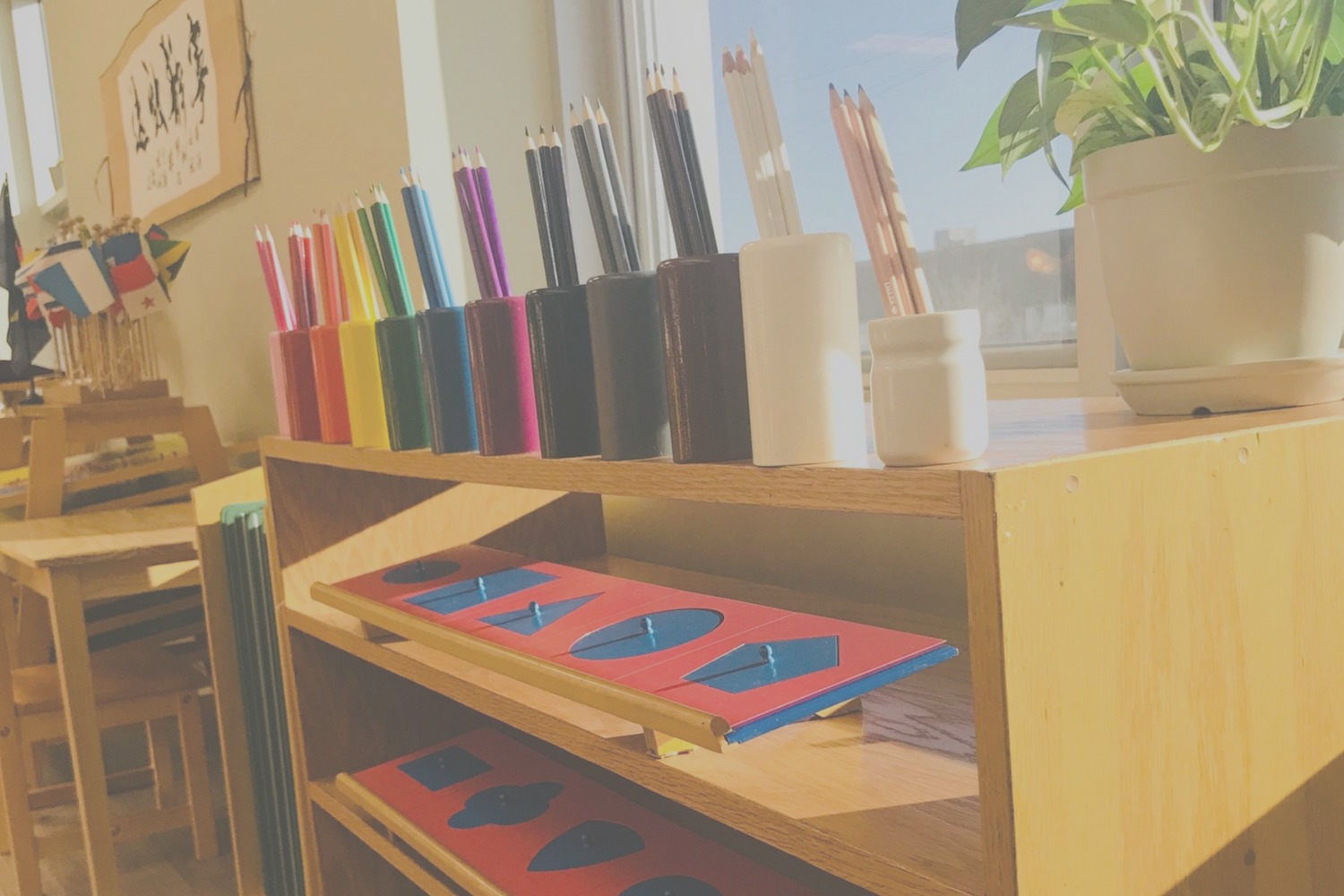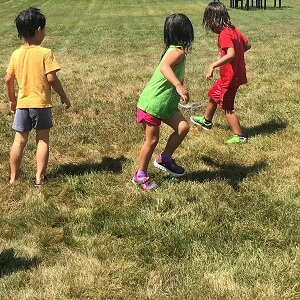The Montessori pedagogy is timeless because it was not born out of theories or hypotheses, but was developed based on years of scientific observation of children. Today, observation continues to be the cornerstone of what we do. Through scientific observation and diligent note taking, we identify each child’s interests, obstacles, as well as patterns of behavior, and adapt lesson plans according to individual developmental needs.
Prepared Environment
We take great effort to carefully prepare and design the environment. Each and every piece of material is deliberately chosen, has a purpose, and serves the developmental needs of children in the community. Beauty and order are important characteristics of the environment and are diligently maintained so that children are attracted and inspired to work with the materials.
We believe that adults are part of the “prepared environment”, and in fact, the most important "material" in the environment. Our presence, behavior, and attitude have a powerful influence on children as they are always observing and absorbing the environment, whether or not they appear to be doing so. We strive to present our best selves and be mindful to model movement, language, and attitude at all times so that children internalize the graceful and courteous ways to move, talk, and interact with others. We help children develop social skills through Grace and Courtesy lessons. We give the specific language to use and support children by providing opportunities to practice social relationships and customs in a safe, natural, and unintimidating environment. Children learn how to collaborate, contribute, and live in a community harmoniously.
Children learn through interacting with their environment. We provide a safe and nurturing environment in which learning takes place spontaneously at each child’s own pace. We value process over product, and are careful to protect children’s concentration anytime and anywhere it happens. We encourage and respect children’s exploration and self-discovery. We understand young children are sensorial learners - they are internalizing and building sensorial perceptions as they repetitively interact with the environment. This is not a process that can be taught externally. For this reason, we never correct a child’s sensorial “mistake”.
Freedom and Limits
Children have an intrinsic motivation to learn, regardless of external rewards. Our role is to protect this love for knowledge, rather than using rewards or punishments to change their behavior. We have zero tolerance for shaming or humiliation as it is very important to protect children’s self-esteem and confidence.
Development happens through movement and activity. In our environment, we do not wish to control the child’s behavior, as we believe that character is not taught or instilled. We can only help the child develop his/her character through allowing freedom of purposeful work. We offer three-hour uninterrupted work cycle daily during which children have the freedom to choose, repeat, move, and communicate. This freedom, balanced with clear and consistent limits, cultivates independence, concentration, coordinated movement, and self-discipline.
How We "Teach"
We refer to what the child does in the environment as “work”, which is not to be understood in a conventional sense. In Dr. Montessori’s own words: “The child can only develop fully by means of experience in his environment. We call such experience ‘work’.” The guides (teachers in Montessori classrooms) connect children with the materials through “presentations”. We make each presentation as magical and enticing as possible, and give the child undivided attention. We talk little and move slowly and deliberately so that the child can have a clear view and focus on the movement. The child is then free to work with the material uninterrupted for as long as it satisfies his/her needs.
Creativity
There can be no meaningful creations without an understanding of the basic properties of the real world. In Montessori education, we lay the foundations by providing materials and activities for children to first gain a very concrete understanding of how the world works. This knowledge is instrumental for their creative development, which includes not only artistic expression, but also creative solutions.
We prepare a variety of materials for artistic expression, and present the techniques to children. Children are then left free to explore. Any product is respected as the child’s own expression and we are careful not to pass on any judgment. In such an environment, children choose to produce art to satisfy their creative urges, rather than to please adults.
Creativity is not limited to artistic expressions. Our environment is designed to encourage creativity. We present the keys and the child is free to explore and discover. For example, we show only one of many ways to build the pink tower, brown stairs, and red rods as separate activities. What is often observed is that, when left to explore and without being instructed, children start combining these materials and discovering the inter-relationships among them in multi-dimensional aspects. Such self-discovery process is the manifestation of the child's creativity, and provides the child much more profound understanding of the physical properties of the world.
There is no better environment to encourage creativity than one in which children are free to follow their interest without being interrupted. The three-hour uninterrupted work cycle protects the child’s creative process. Rather than being given a window of time during the day where a product has to be produced regardless whether the creative urge exists, or being forced to stop when the work is still in progress, children in our environment are free to create wherever they feel like and for as long as they are interested.
Movement
Physical movement is fundamental to children’s learning. A wide array of activities in the Children’s House emphasize physical movement. In addition, children have the opportunity to play outside rain or shine (with proper gear from home). They are encouraged to explore the elements of nature using their senses. Our 12,000+ sq ft natural outdoor environment provides wonderful opportunities for unstructured play and exploration. Planting, watering, leaf raking, and snow shoveling are among available activities. Children are free to be active, physical, restful, adventurous, or creative. During inclement weather, a movement room is available for children to experience locomotive and non-locomotive movements through activities such as games, dancing, and yoga.






